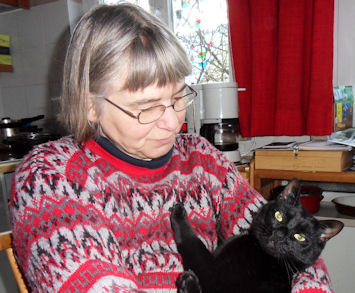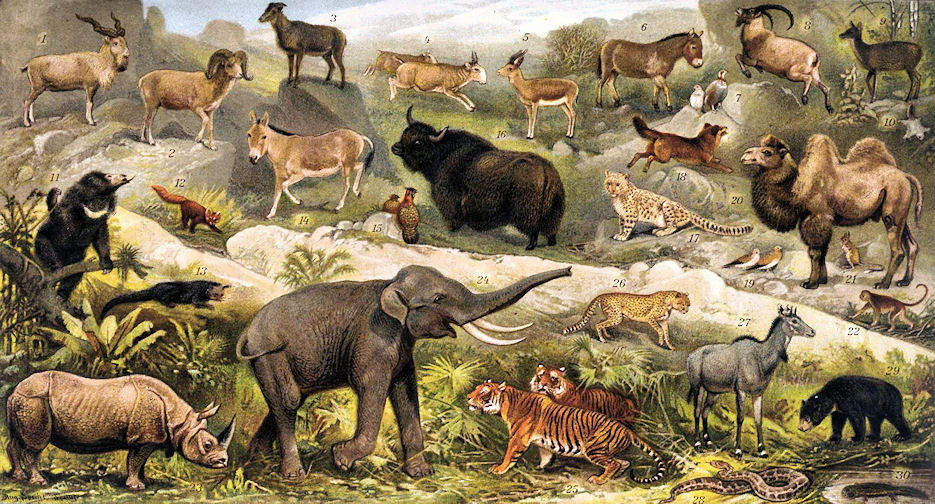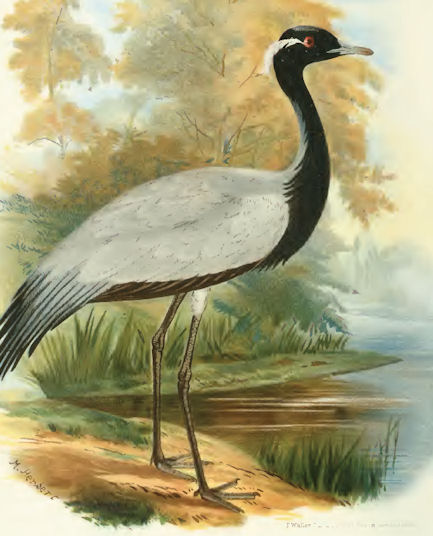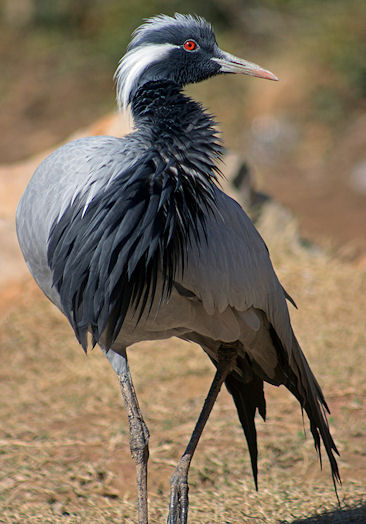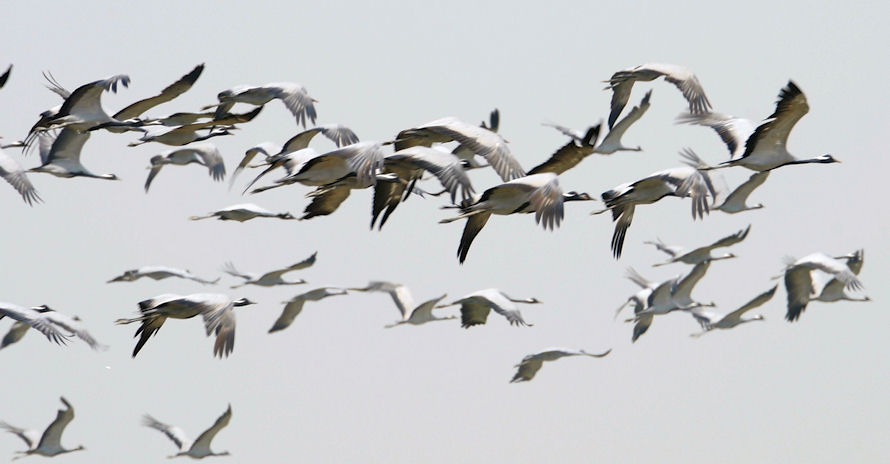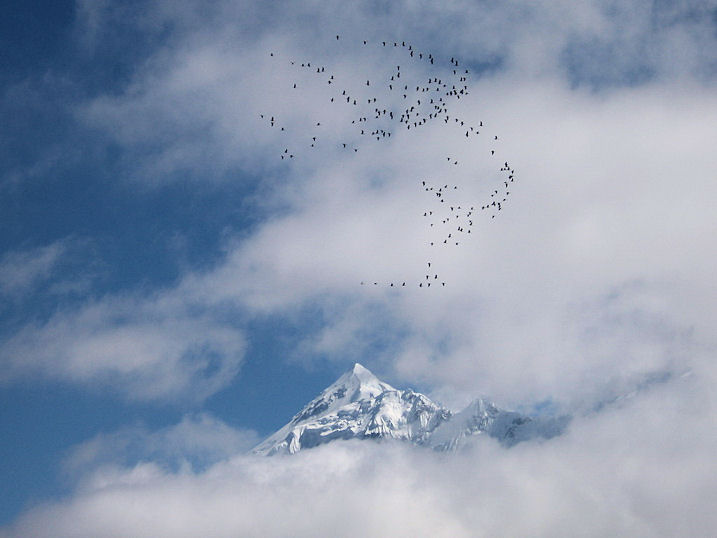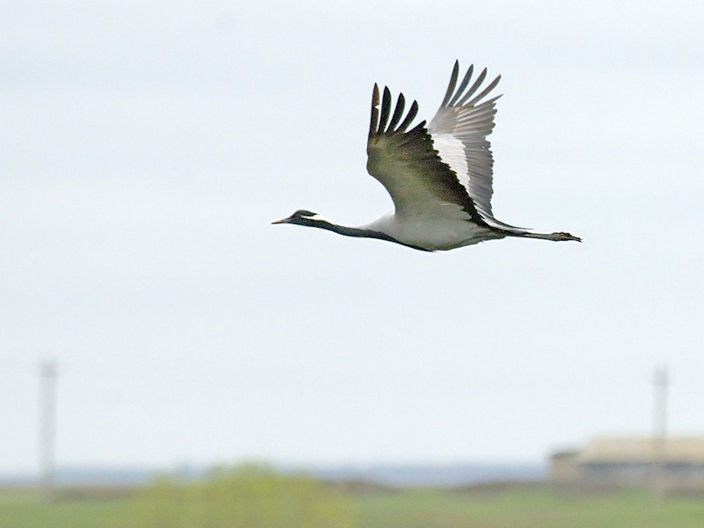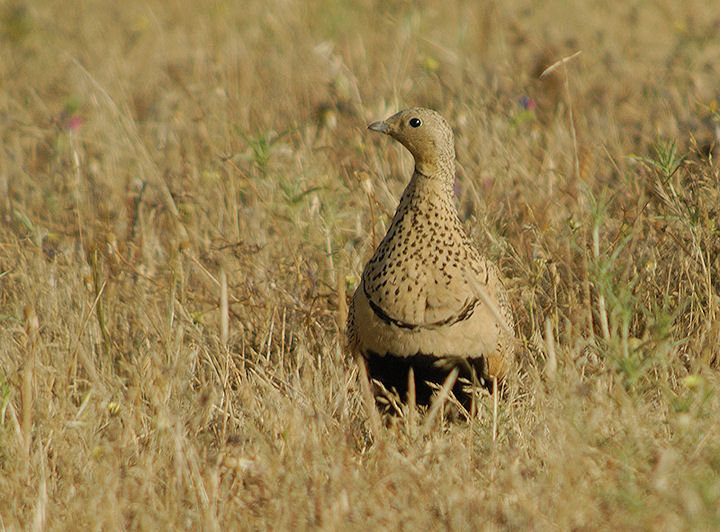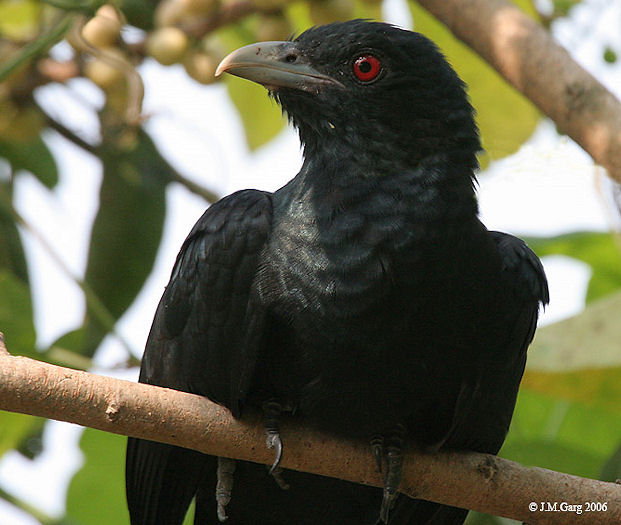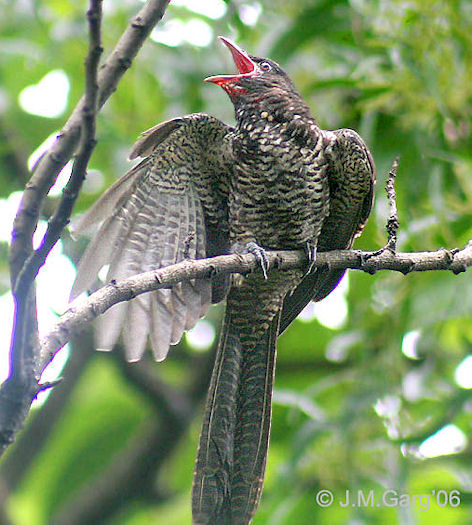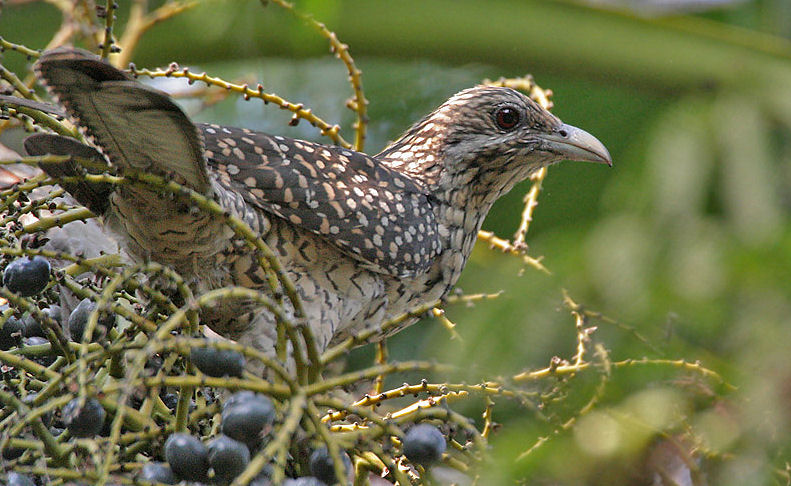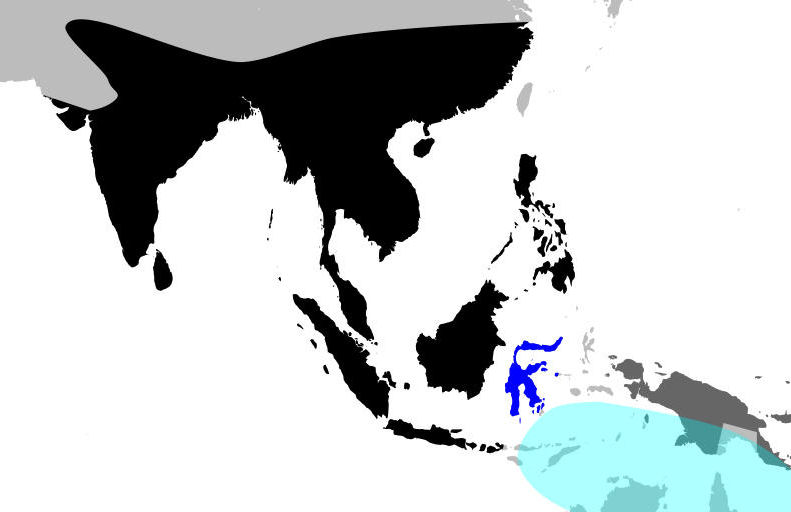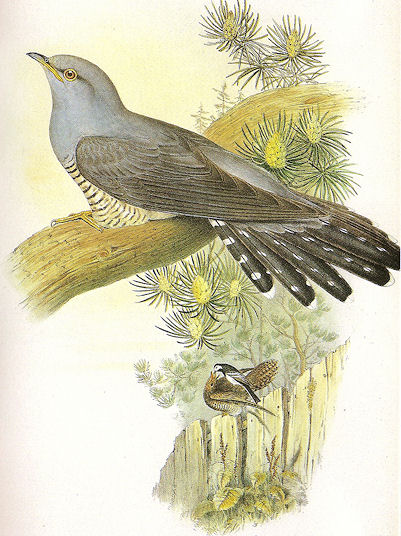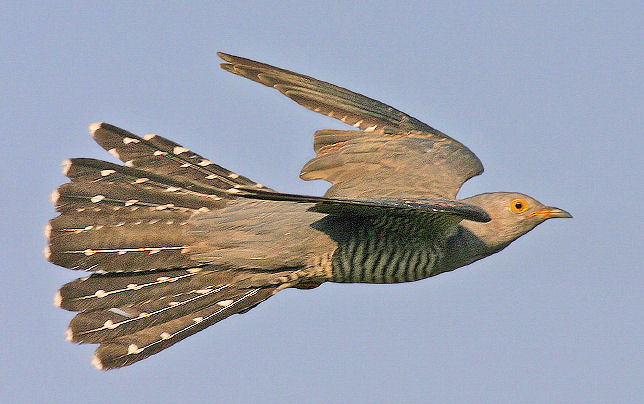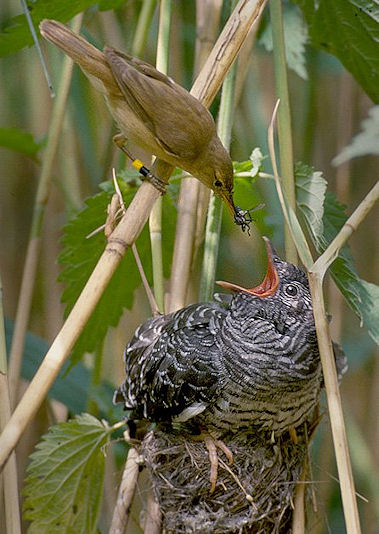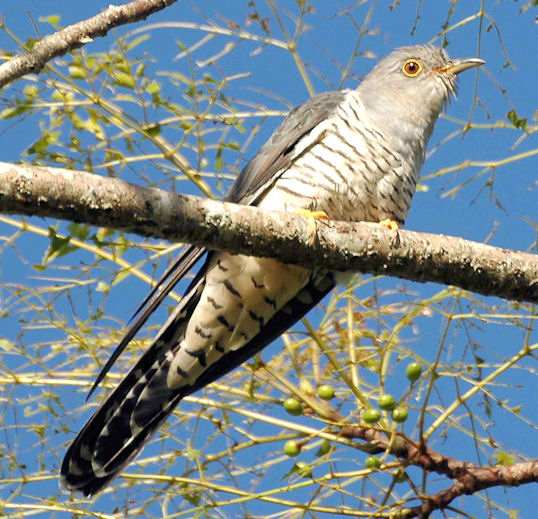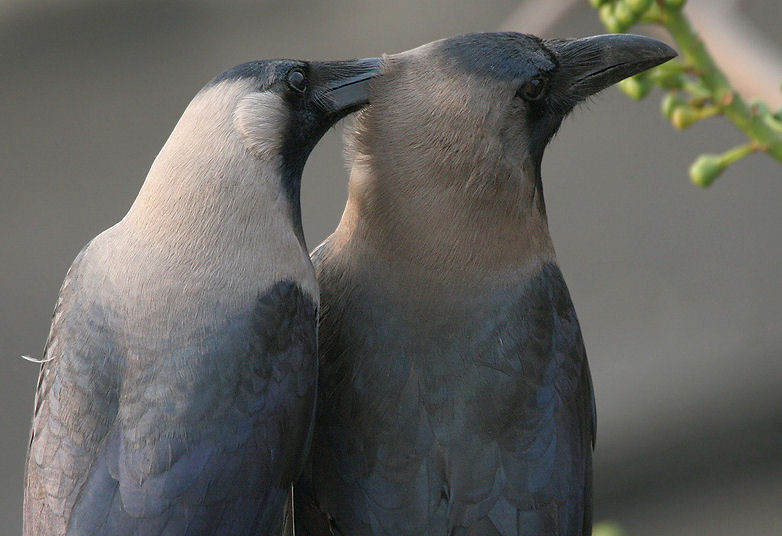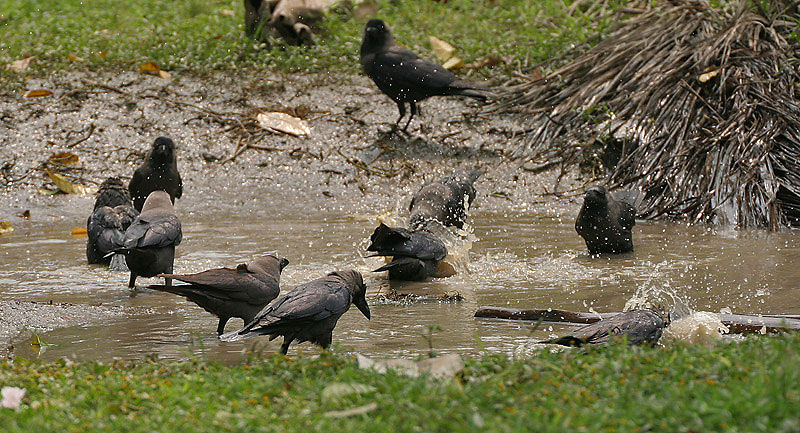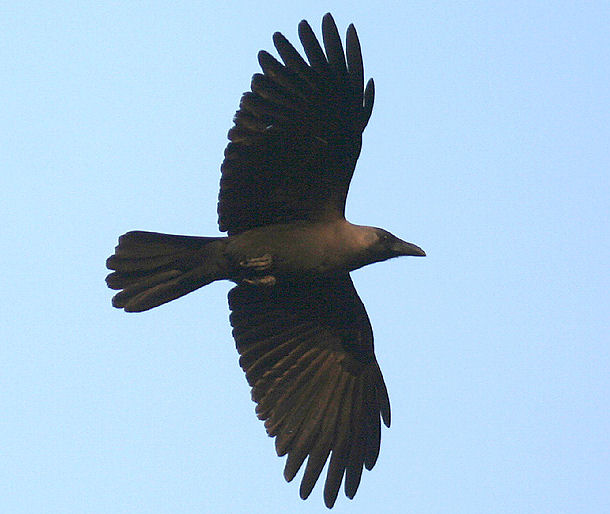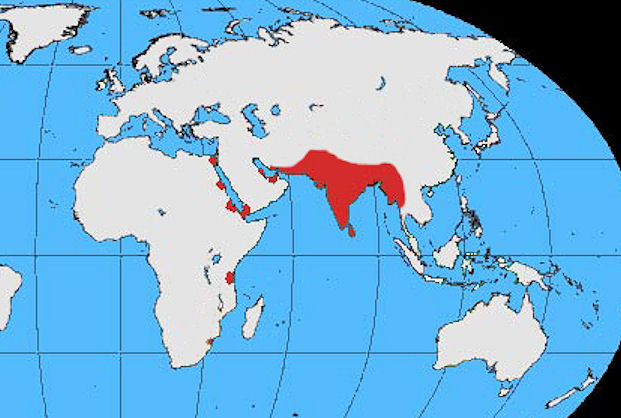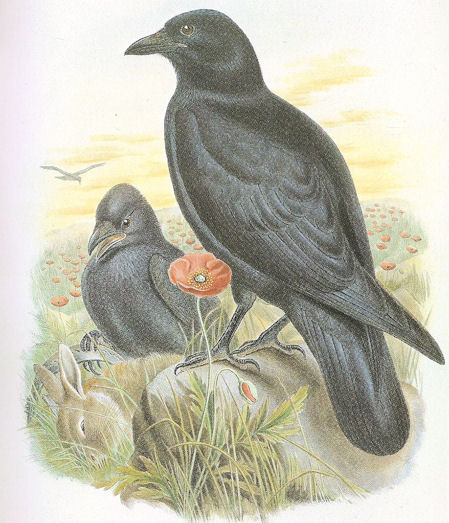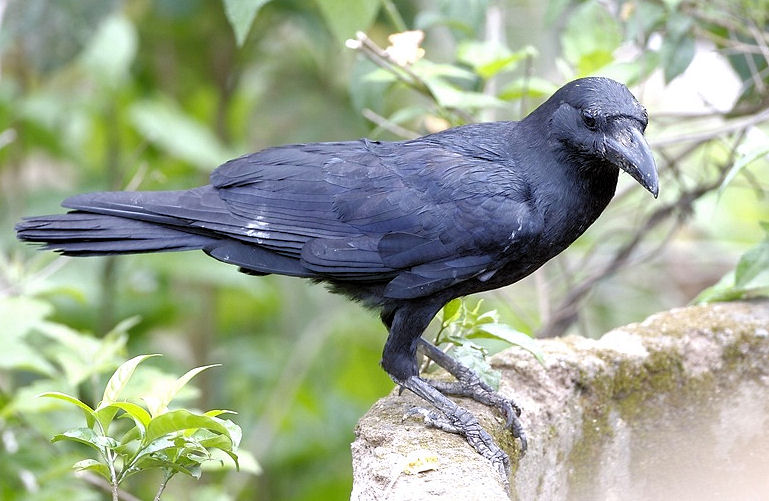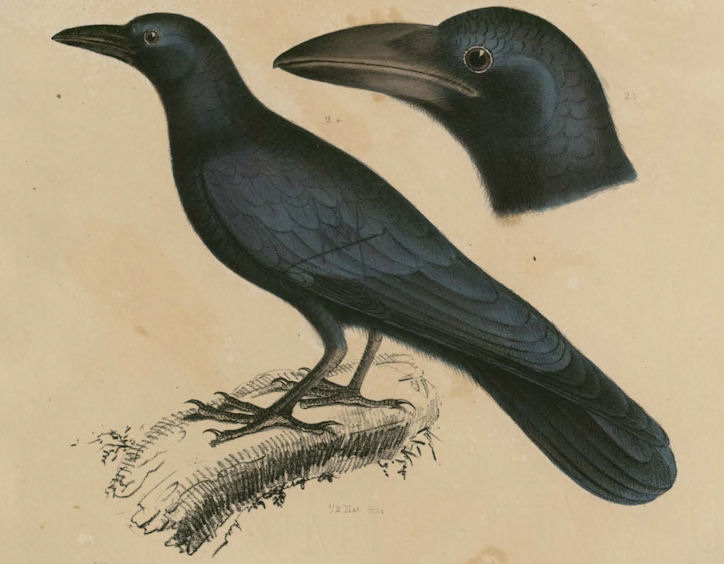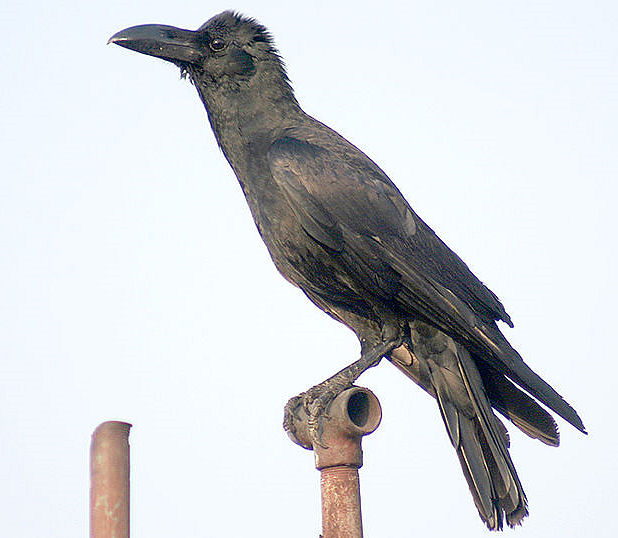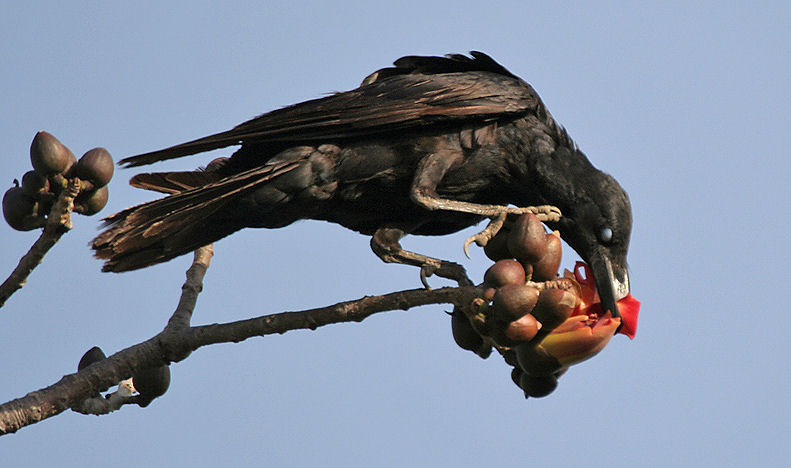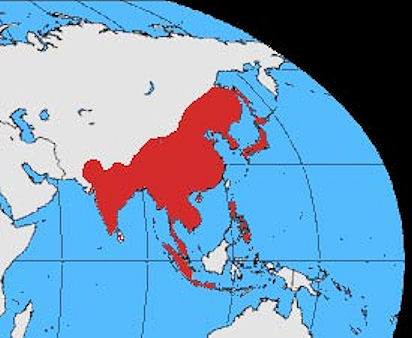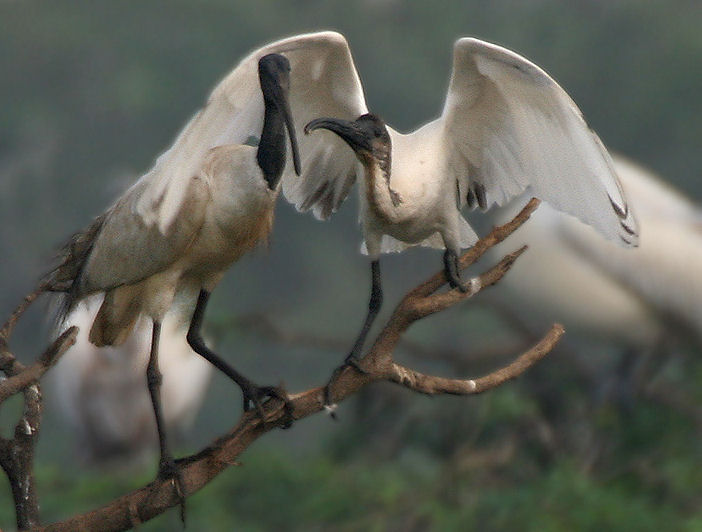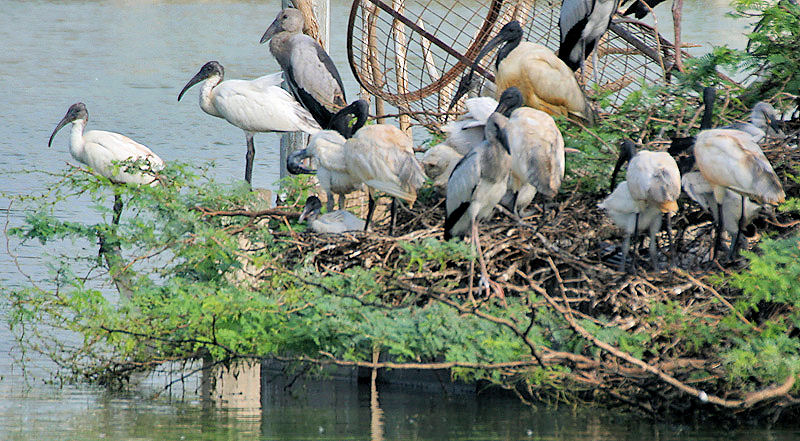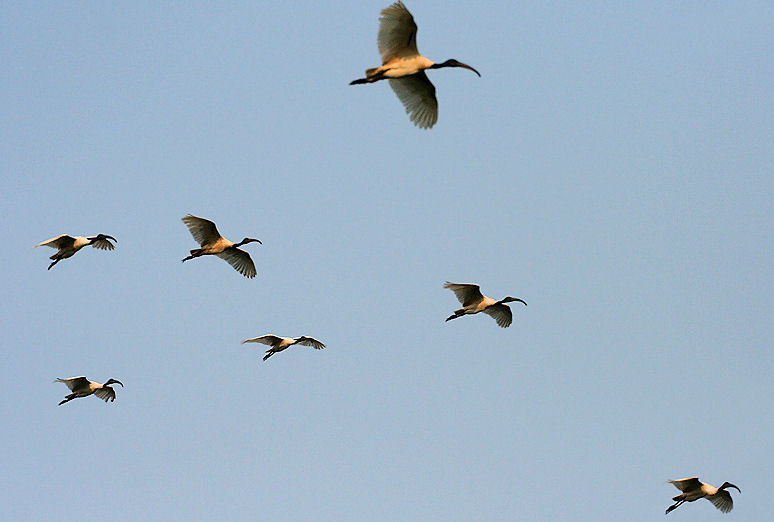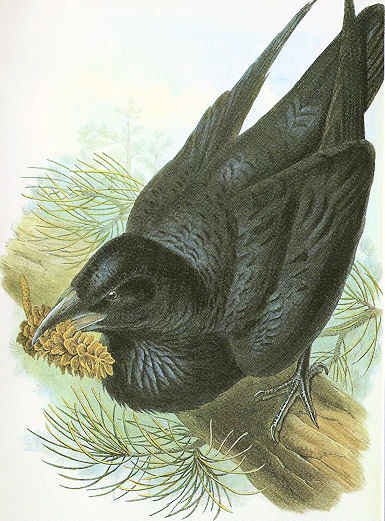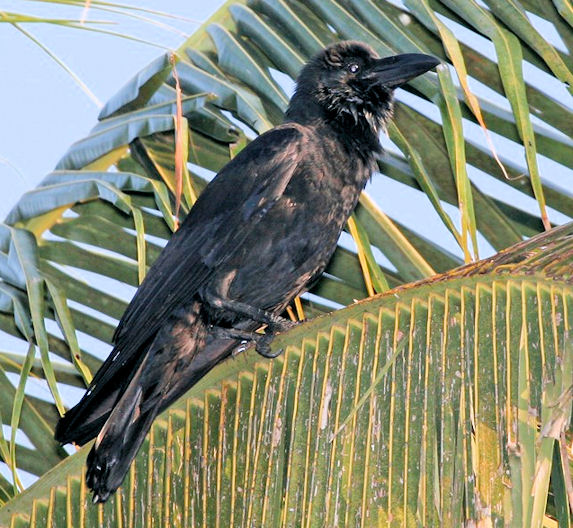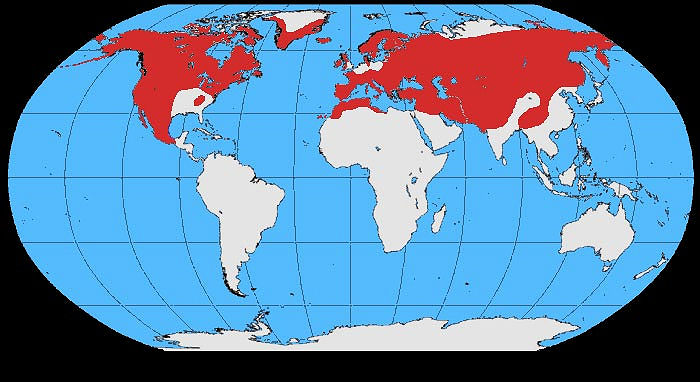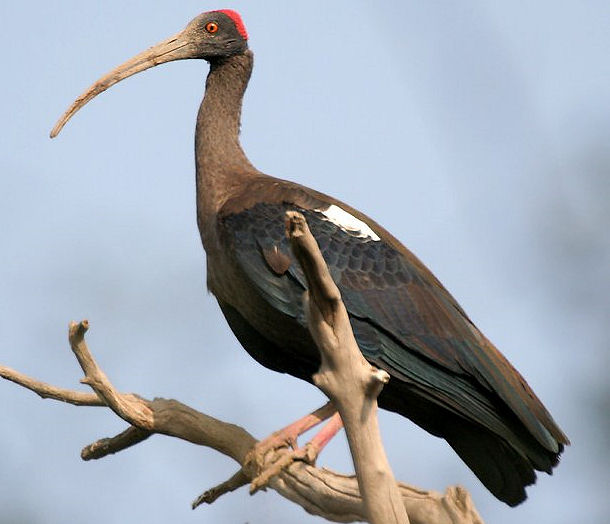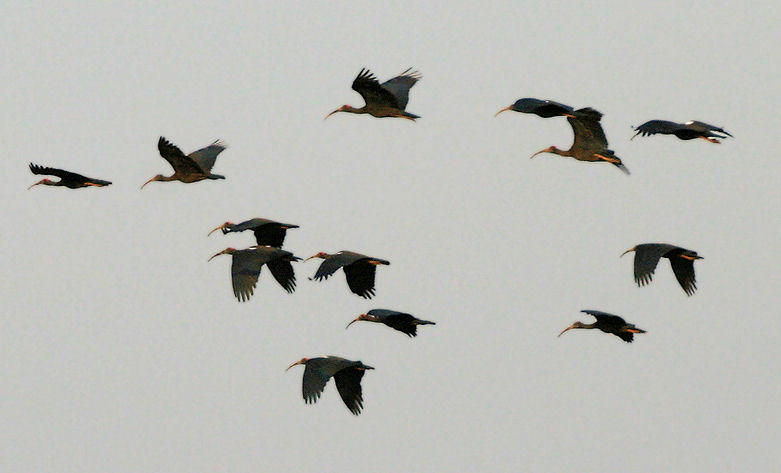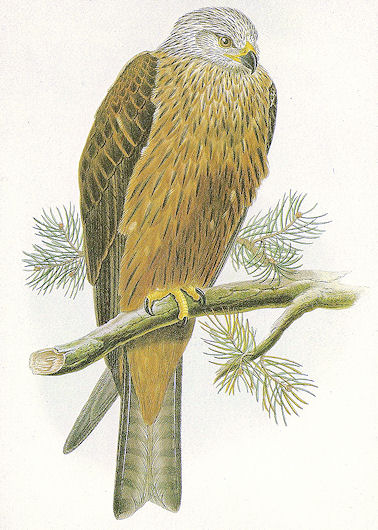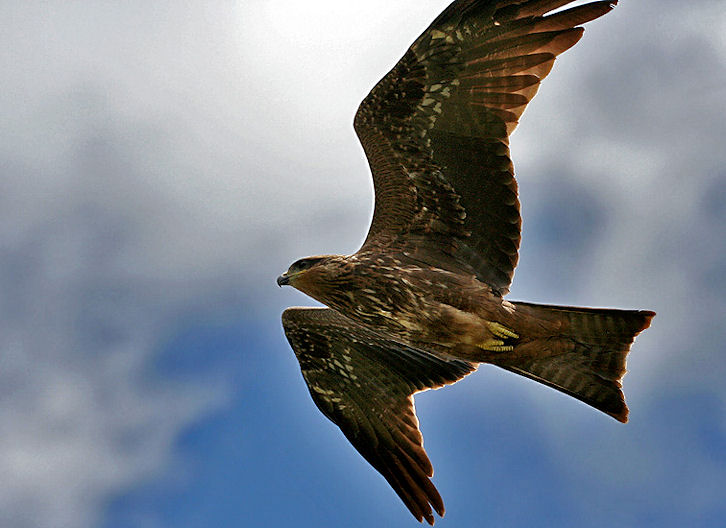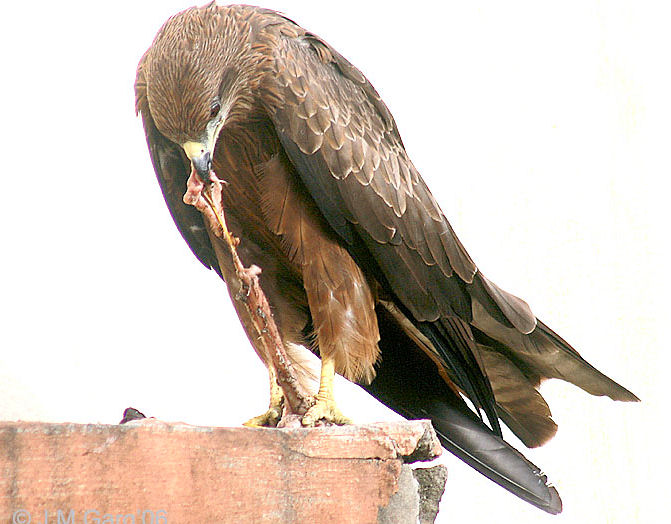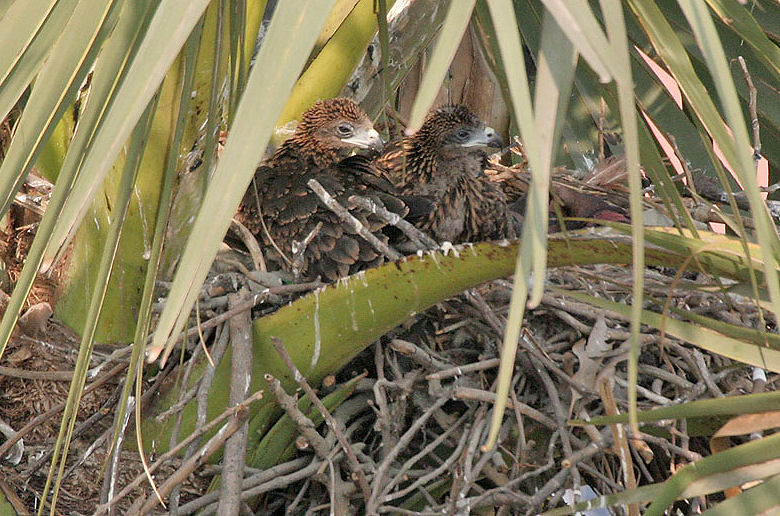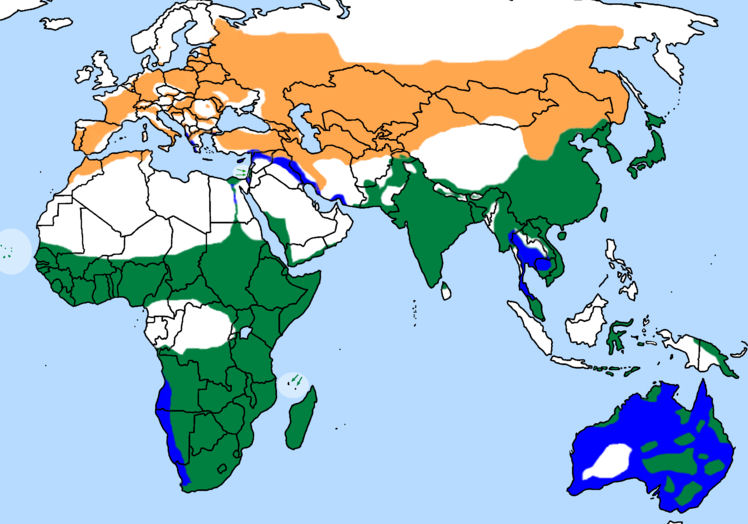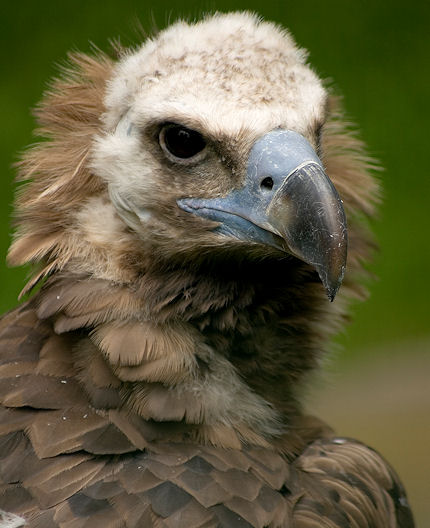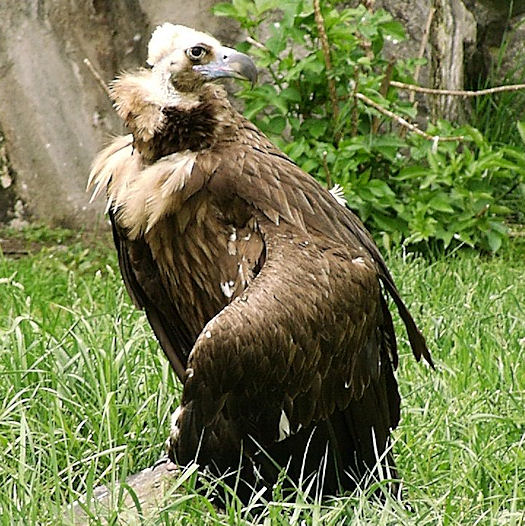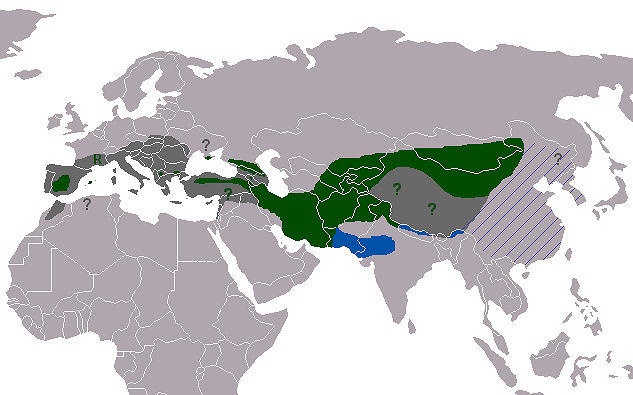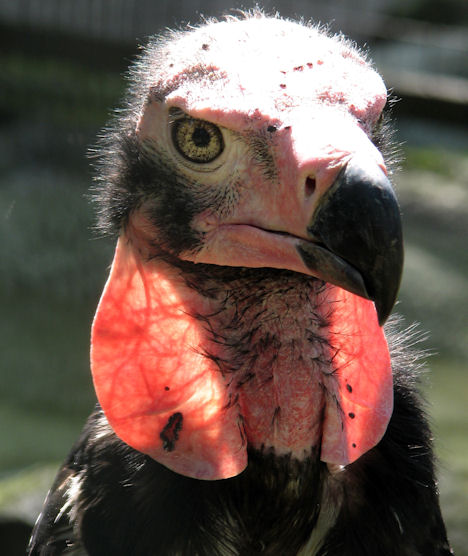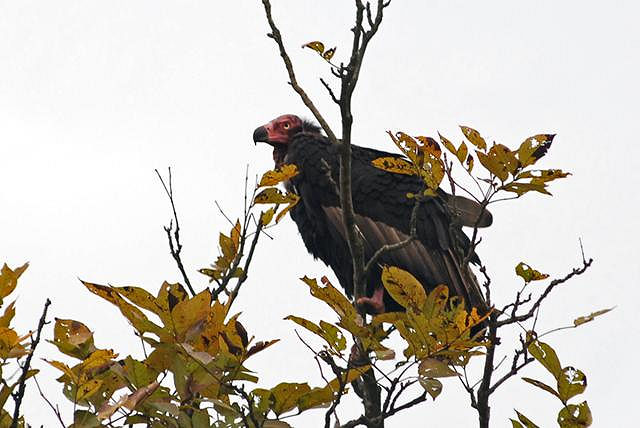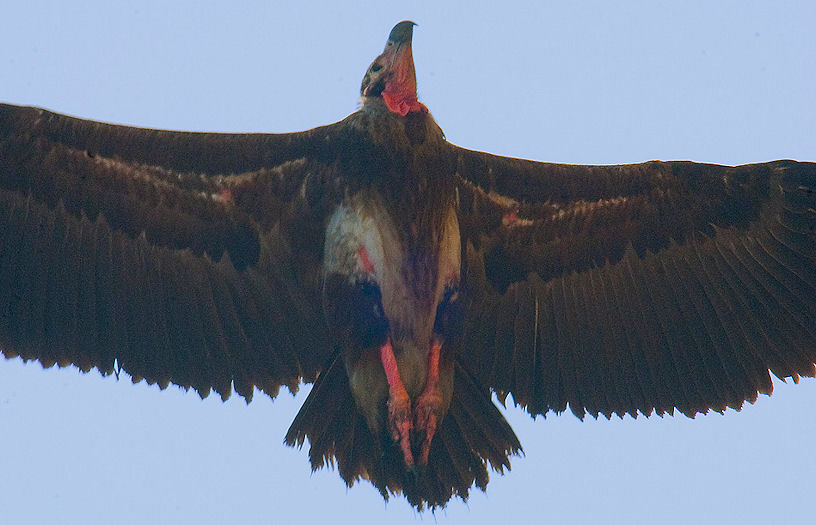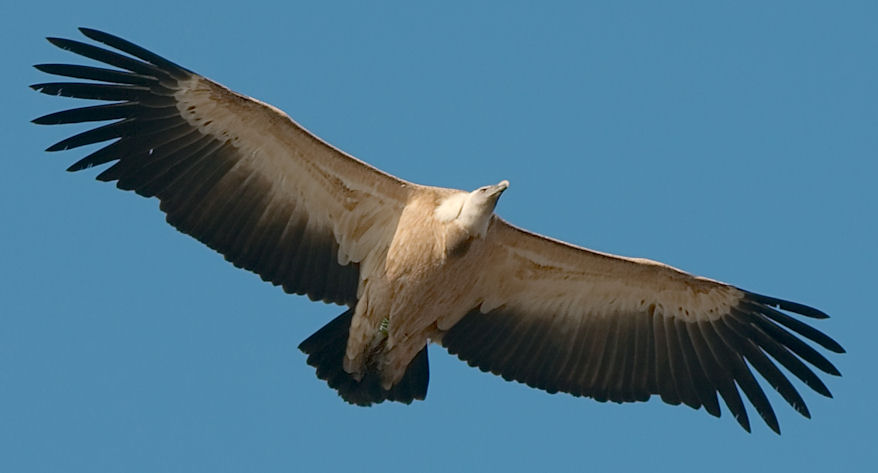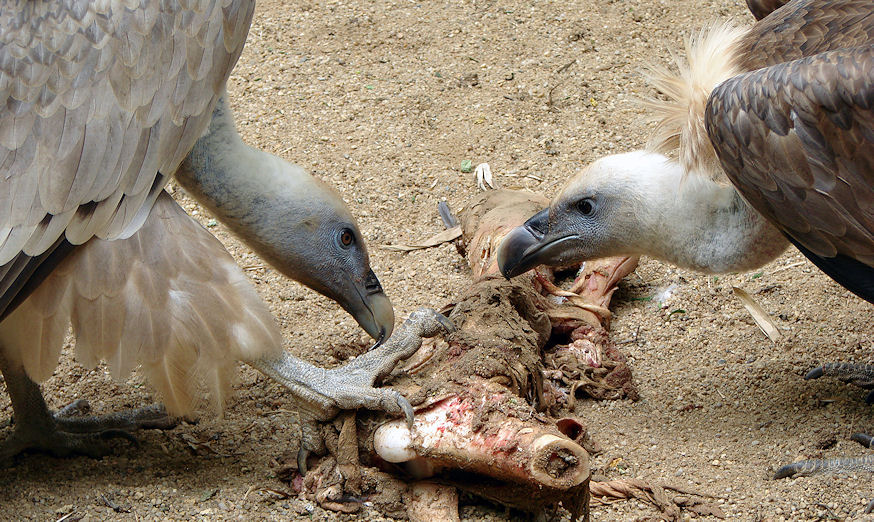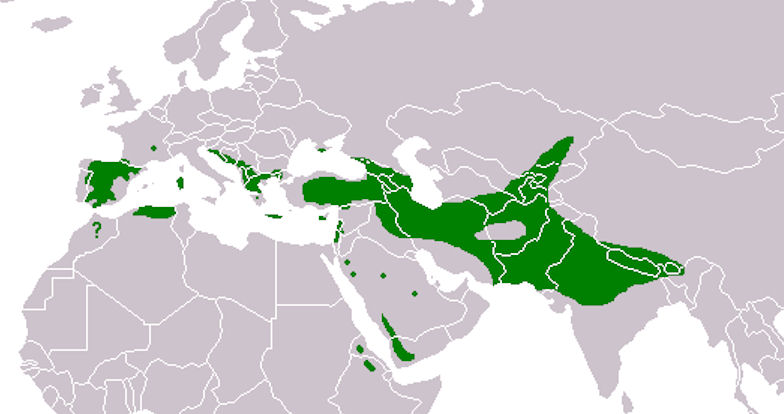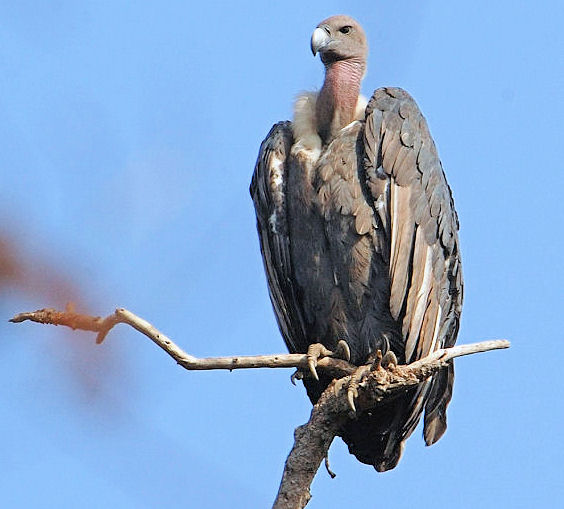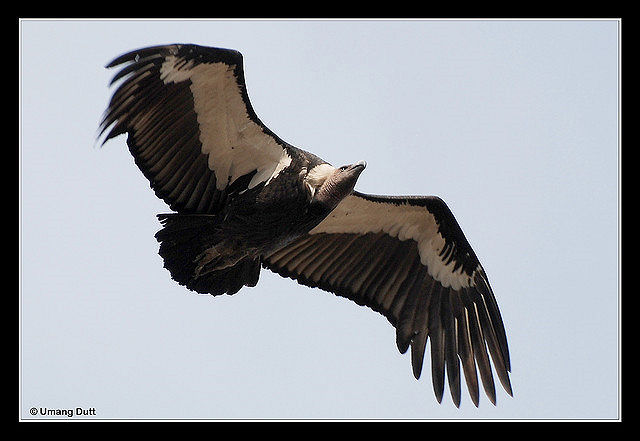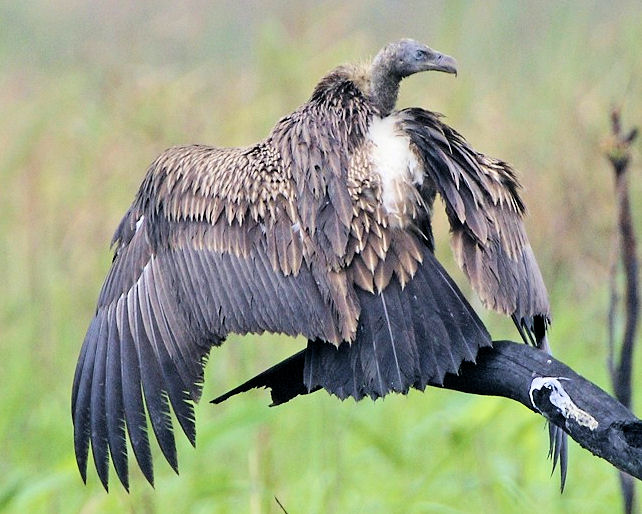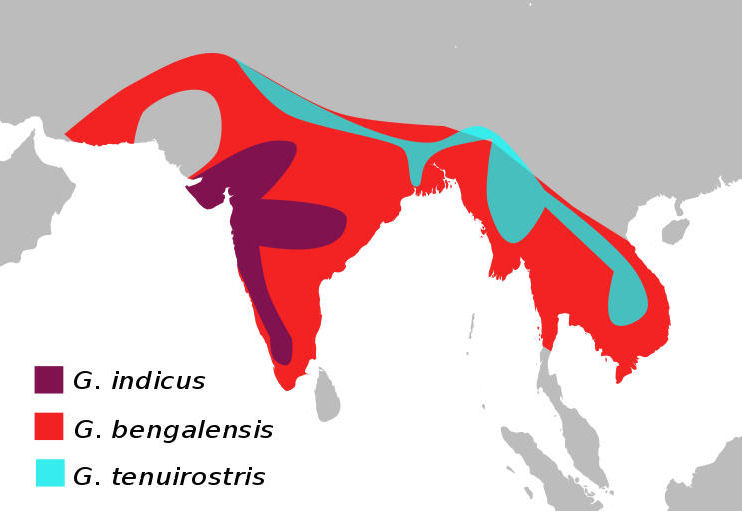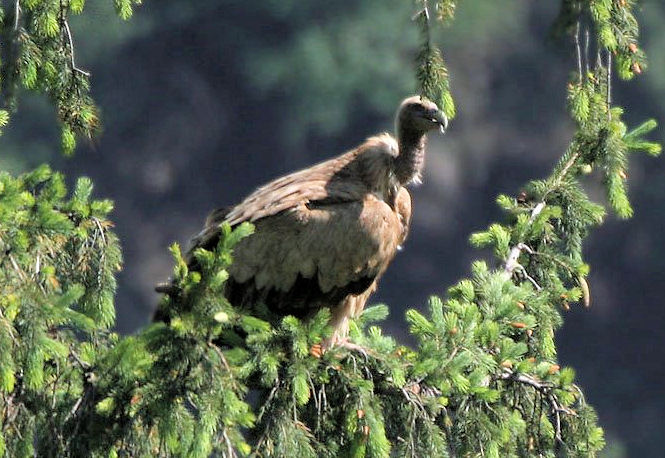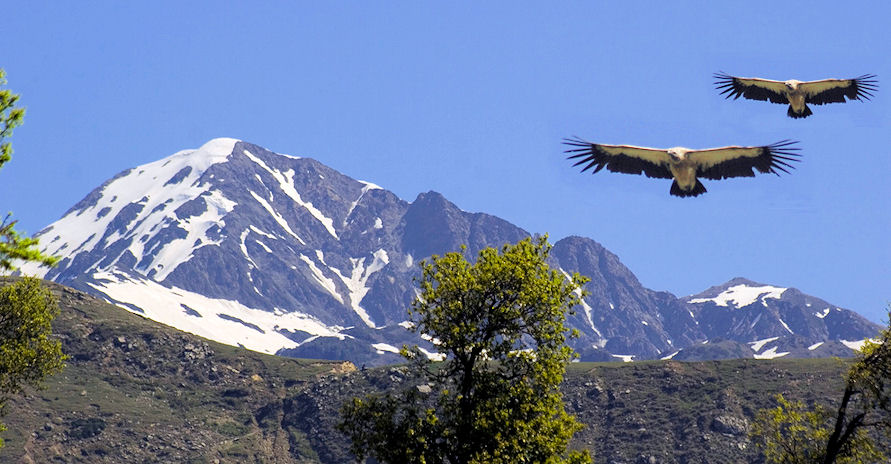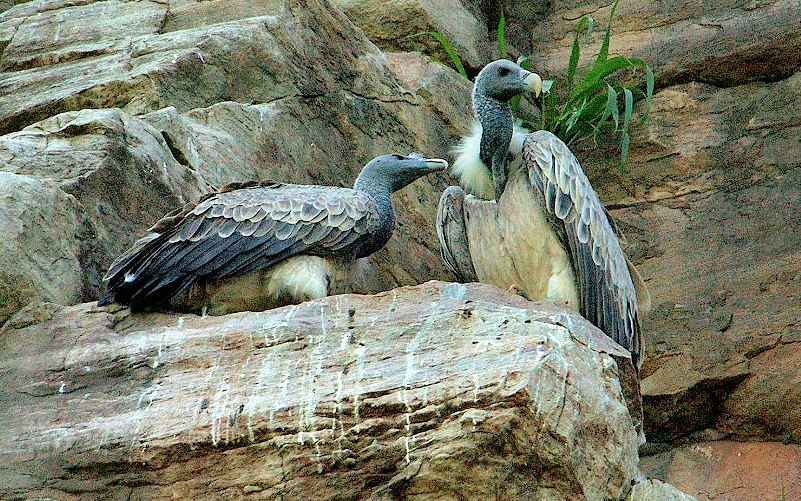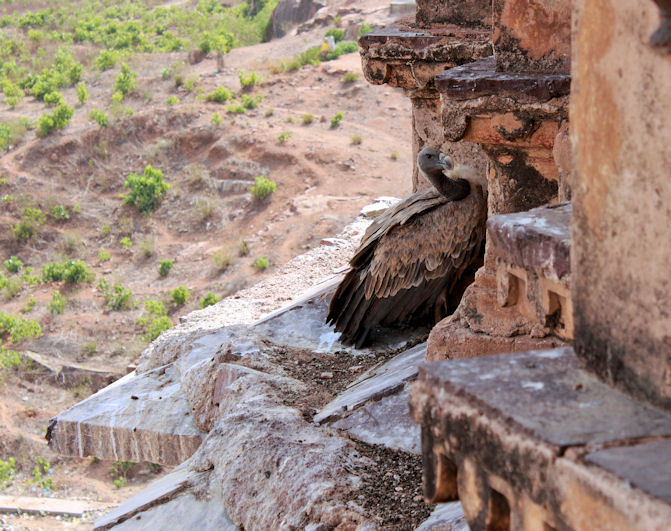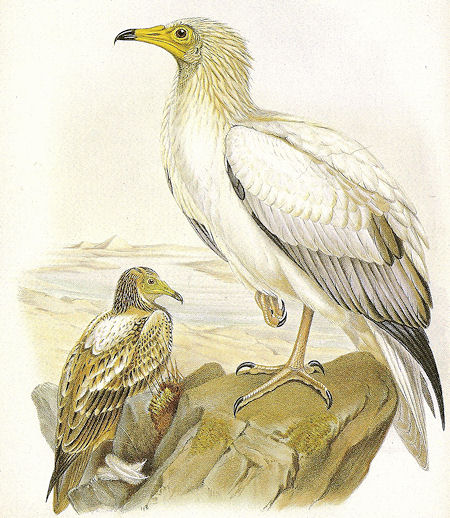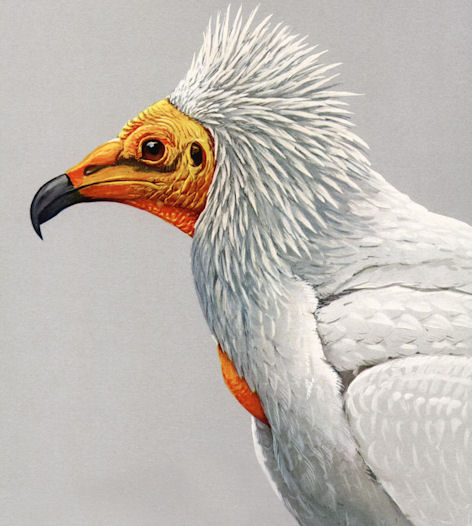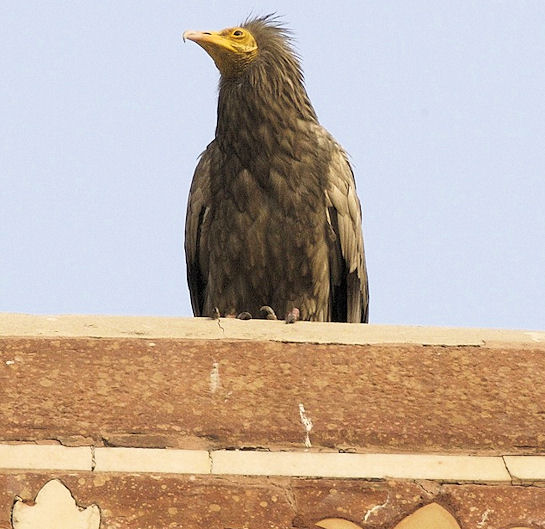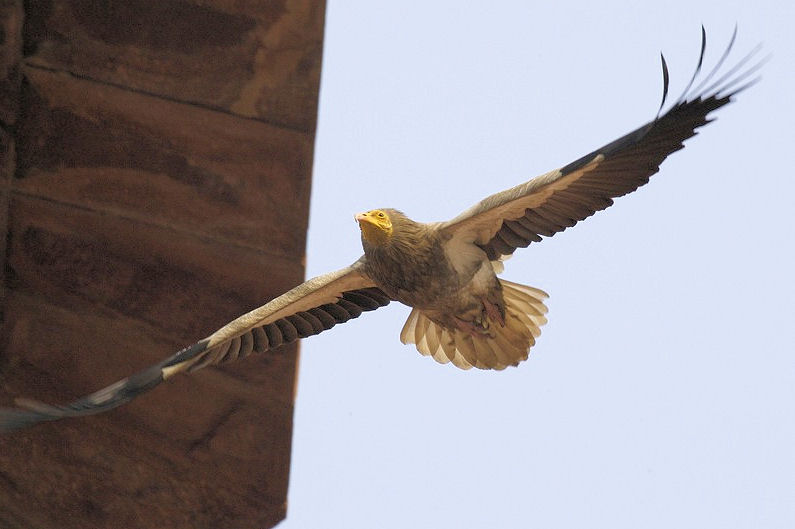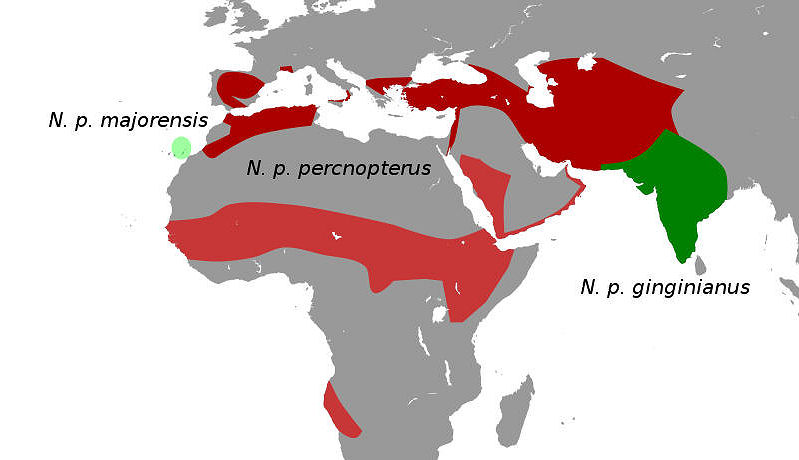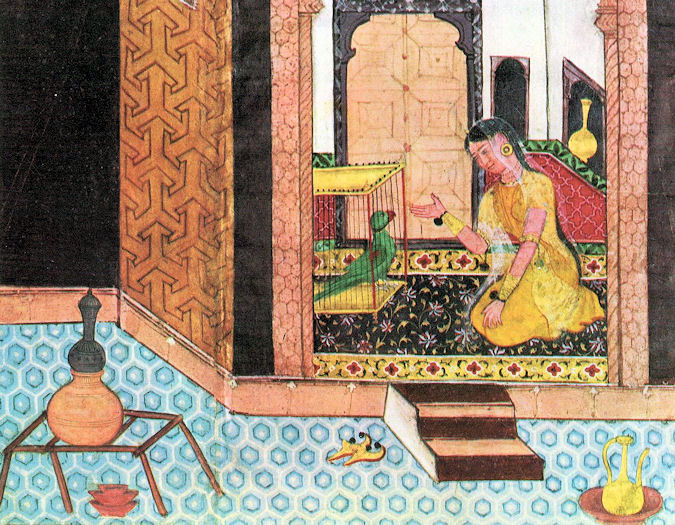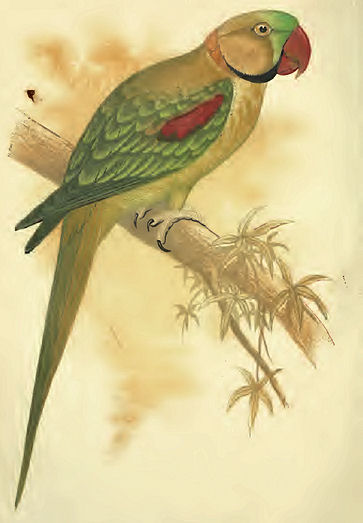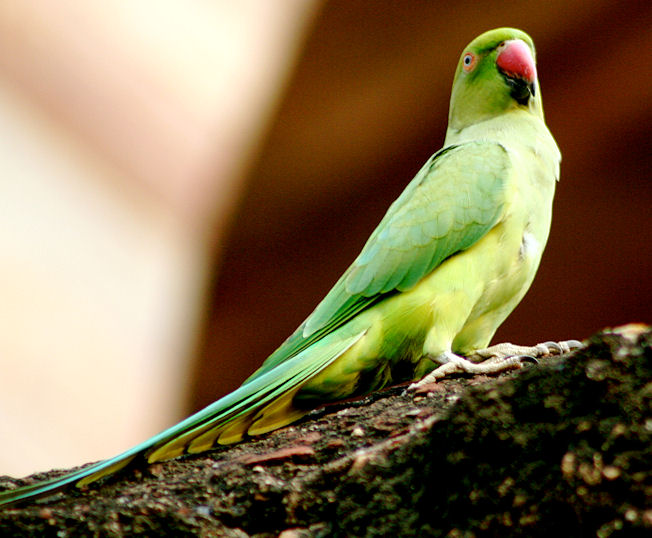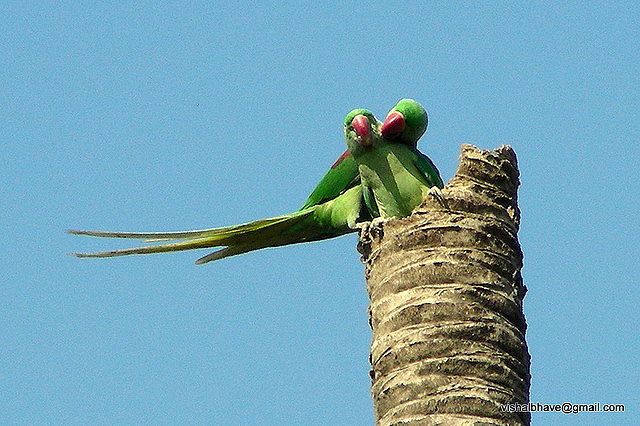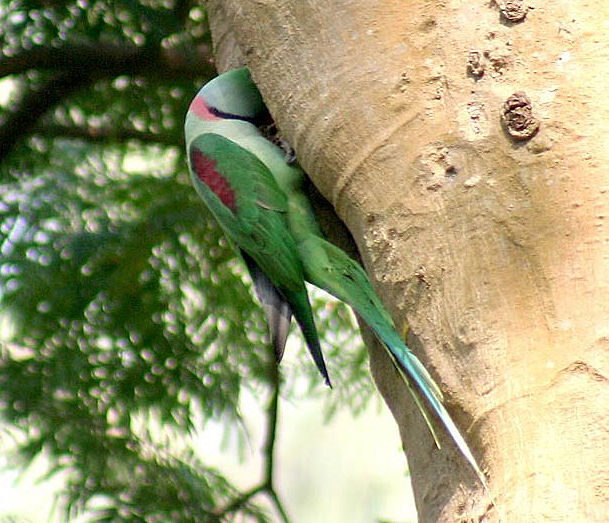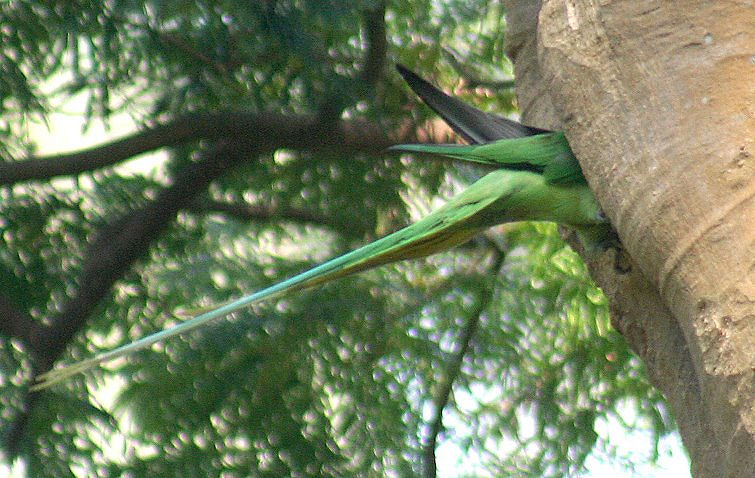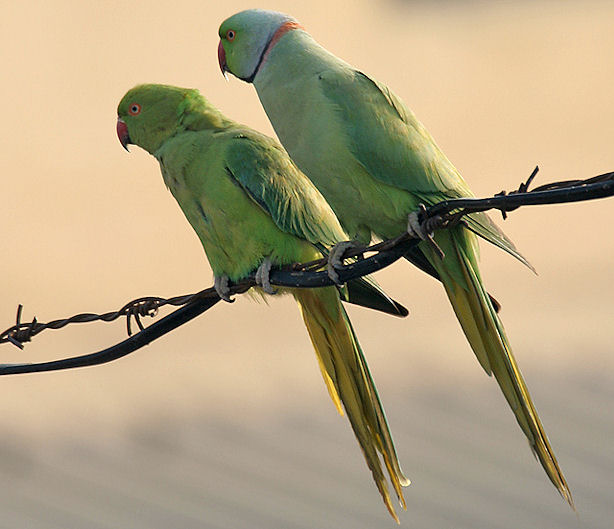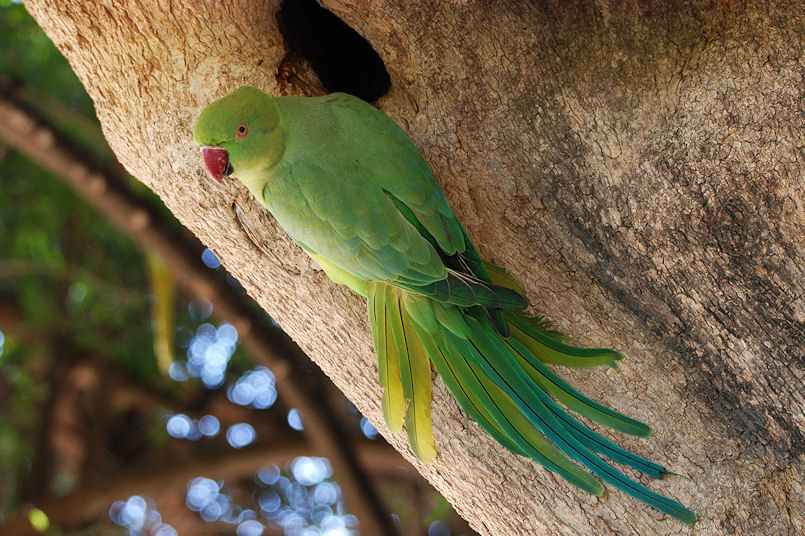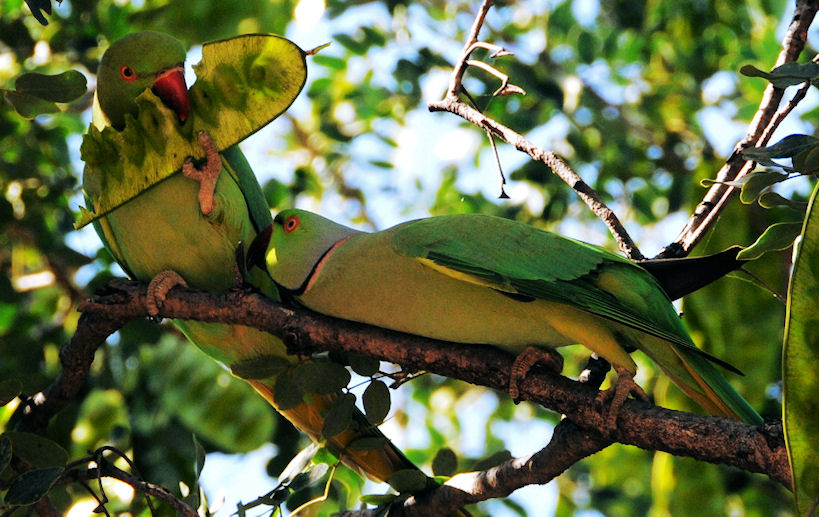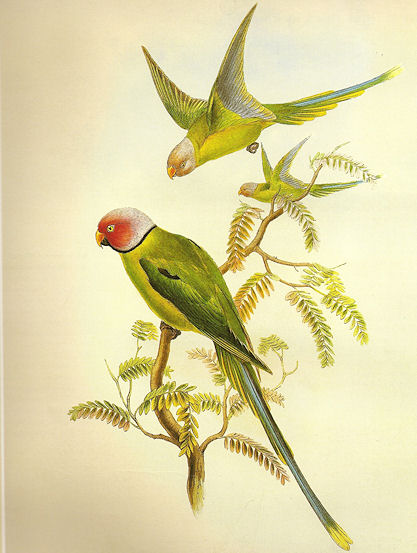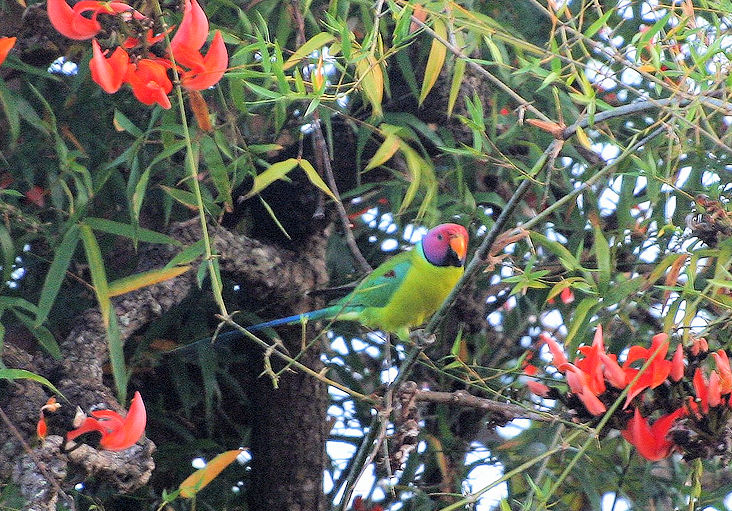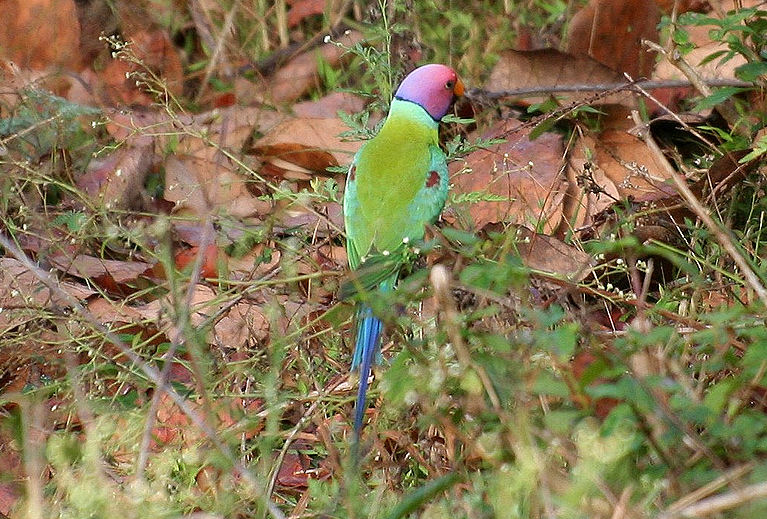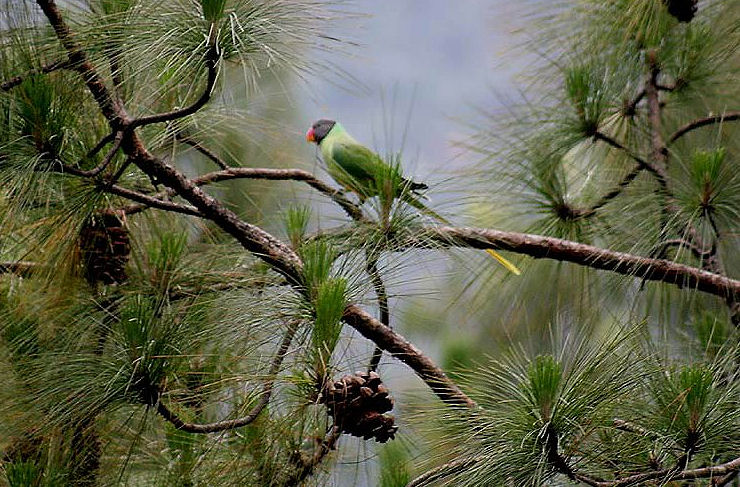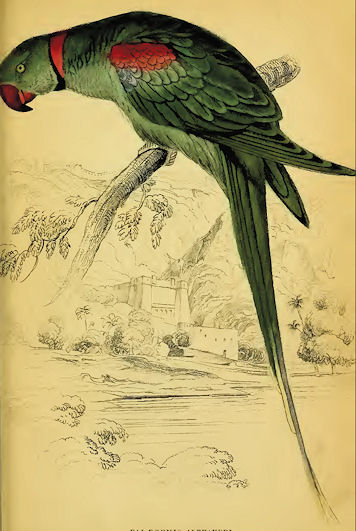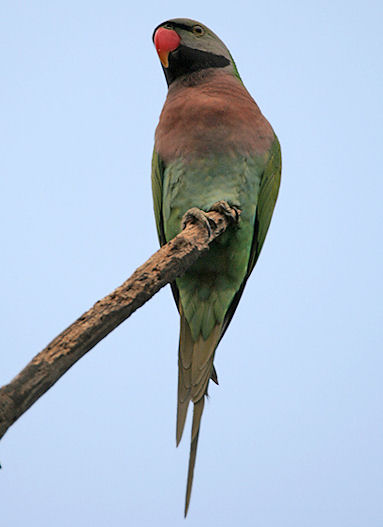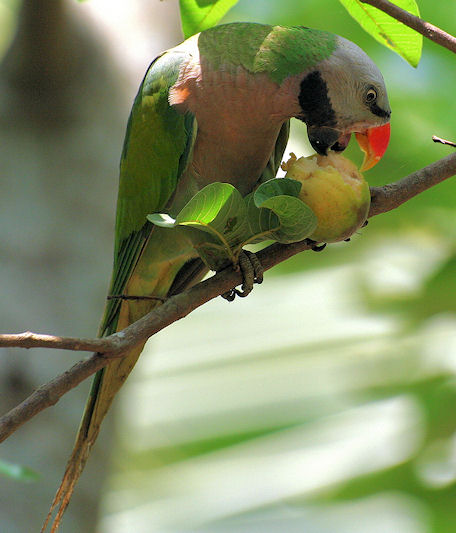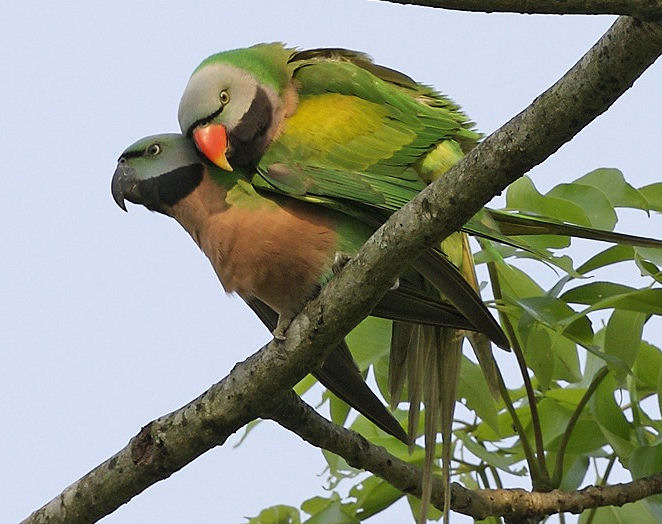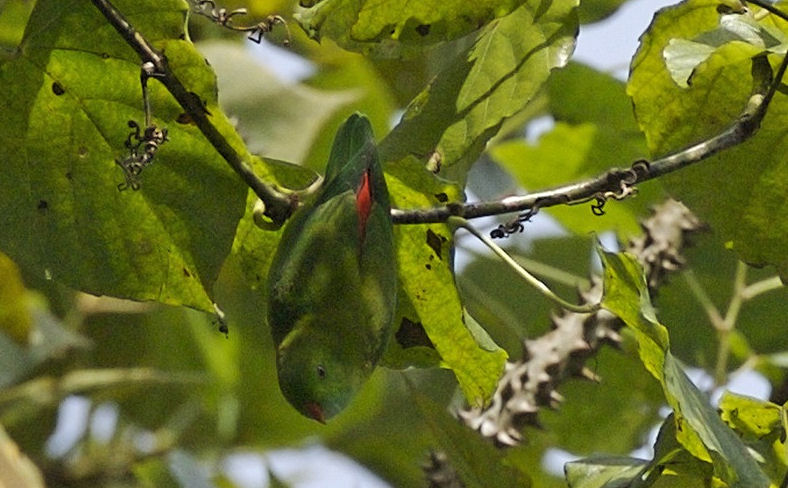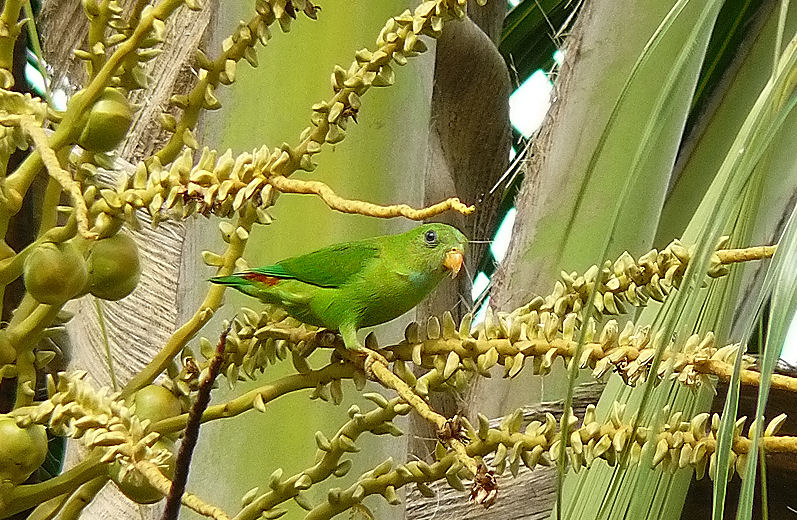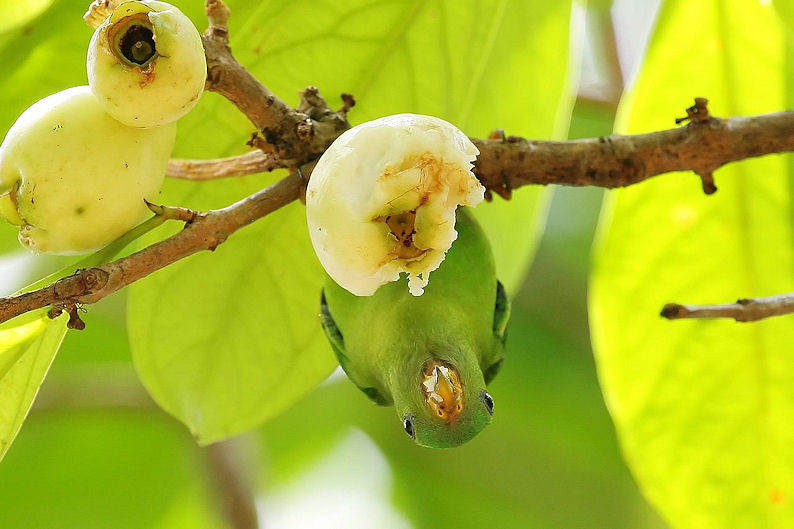|
"The common Crow of India is found from the
foot of the Himalayas to Ceylon, and eastwards in Assam
and part of Arracan. Adams states that it occurs in the Valley of
Cashmere, and it is found in Nepal, but it does not extend
into the interior of the hills, and is at present quite unknown in
Sikhim. It is one of the best known and familiar birds in India,
being found in vast numbers in every city, town, village, and
cantonment or camp ; and the scientific traveller in India often
regrets that such an inappropriate specific name should have been
applied to this species, for it tends to bring into ridicule,
among the unscientific, the system of nomenclature.
This Crow, though eminently social, is not
strictly gregarious, but it roosts in company in vast numbers, and
there are certain spots near all large towns or stations, where they
nightly congregate for this purpose, coming from a distance
varying from three to ten miles of radius. Great is the clamour in
selecting a spot, and numerous are the squabbles, and prolonged
to a late hour, before all are settled for the night ; and
this noise is increased by the swarms of Parrakeets, Mynas, and other
birds, that all have their night's lodgings together.
Very early in the morning, the Crows are on
the alert, occasionally before daylight, but generally shortly
afterwards ; and, after a considerable, amount of cackling and flying
hither and thither, probably to compare notes of yesterday's
success in foraging, perhaps to propose an interchange of locality
for the day, they disperse in parties, varying from two or
three to twenty, thirty, or more ; those that have a distance to go,
starting early, and those whose hunting grounds are at hand, taking it
more leisurely, chatting with their neighbours, or making
themselves smart by a little extra pruning of their feathers.
The food of this Crow is greatly varied ;
but, as a rule, it may be said that it lives on the crumbs that fall
from the food of man. Many natives eat habitually out of doors, and
the remnants of boiled rice or other grain are thrown away,
whilst, in those that feed within doors, the fragments are pitched
out at certain stated intervals, well known to the Crows of the
vicinity, who proceed from house to house, warned by some watchful
member of their community when the feast is at hand. So well
known is the process of cooking, that a small fire, or
rather its attendant smoke, even in some unusual spot, far away from
their daily haunt, will at once attract one or two hungry Crows, who,
if the symptoms of food are favorable, remain for the expected
leavings. In the intervals between the meals of mankind, some betake
themselves early in the morning to some plain that has perhaps
been flooded, to pick up a crab, a frog, a fish, or insect.
Others hunt for grubs in ploughed lands, or in pastures, along with
cattle, and others may be seen ridding cattle of the ticks or other
insects that infest them ; some betake themselves to the side of a river
or tank ; a few, in the vicinity of large rivers or creeks,
follow vessels, and hunt with the gulls and terns ; and not a few, about
Calcutta and other large cities, find a plentiful repast on the corpse
of some dead Hindoo, or on that of a dead bullock. A banian tree,
a peepul, or other tree with ripe fruit, will always be visited
by many Crows ; and, if a flight of winged termites takes place,
morning or evening, there are the Crows to be found in abundance,
and adroitly catching them in company with Bee-eaters, Kites,
King-crows, and, mayhap, Bats. In the hot weather the Crows take a
long siesta, and evidently feel the mid-day heat much, as they may be
seen seated with open beaks, gasping for a mouthful of cool air.
When their daily avocations are over, they retire, as they
issued forth, in various sized parties, picking up stragglers by the way
from small hamlets or single huts.
The Crow breeds from April to July, according
to the locality, and, occasionally, two or three build in the
same tree, though, in general, there is not more than one. Now and
then they select a corner of a house or some convenient nook,
but generally build in trees, making a moderate fabric of sticks,
occasionally thinly lined with some softer materials. An instance is
recorded by Mr. Blyth, where a pair of Crows, in Calcutta,
had built their nest of the wires taken off from soda-water bottles,
which must have been purloined from some native slop-seller. The
eggs are usually four in number, and are greenish blue, spotted and
blotched in various degrees with brown. They are figured in
Jardine's Contrib. to Ornithology. As related under the head of the
Coel, vol. I. p. 343, this Crow's nest is almost
exclusively selected by that Cuckoo, to deposit her eggs in. In defence of
her young the Crow is very bold, and I have been struck on
the head by one for carrying off a young bird that had
fallen from the nest. The young are fed by their parents for
long after they quit their nest.
The flight of this Crow is easy and
moderately quick, but, when pursued by a Brahminy Kite or a Luggur, it is
capable of considerable speed, and exhibits wonderful
activity and cleverness in dodging its pursuer. The cunning,
familiarity, and intelligence of these birds is so great, that pages could
be filled with anecdotes about them, but my space forbids me to
prolong this account.
Their great abundance and familiarity is one
of the first objects that strike the attention of the stranger on
landing in India, and they often enter rooms through open windows,
and carry off food, or any object that attracts them. With a very
little encouragement they may be induced to enter a room in
numbers, and take food almost from the hand. "About large towns,"
says Mr. Blyth, "they walk and hop like domestic birds, just
stepping aside out of the way of the passers-by, and regardless of the
ordinary throng ; but they still retain all the craft and wariness
of their tribe, and are ever vigilant, making off on the least
suspicious movement, or even on the fixed glance of a stranger. Their
noise is incessant, and if any thing, as the sight of a dead
crow, excites them, is most uproarious and annoying. Eager, bustling,
and busy, their flight is always singularly hurried, as if
time were a matter of some consequence to them ; and in short every
trait of the Crow tribe is prominently developed in this
species. The report of a gun excites a grand commotion among the
community of crows ; they circle and cross rapidly to and fro'
overhead, for the most part out of range, cawing lustily, and
dodging when the gun is pointed at them, whilst others sit
observantly on the neighbouring house-tops, &c., all launching on the wing on
the next discharge with clamourous outcry, and then by degrees
returning to their place of observation."
The Crow appears to possess the element of
fun, for it may often be seen, evidently in sport, to make a swoop
at one of its own kind, or some other bird, and then fly off,
when it has alarmed the bird, with loud caws of success at the
joke. Many anecdotes of the cunning of this Crow are to be found
in the notes of Sykes, Tickell, Burgess, Layard, and Philipps."
[Quelle: Jerdon,
T. C. (Thomas Claverhill) <1811-1872>: The birds of India. --
Calcutta, 1862. -- Vol 2,1. -- S. 298ff.] |

